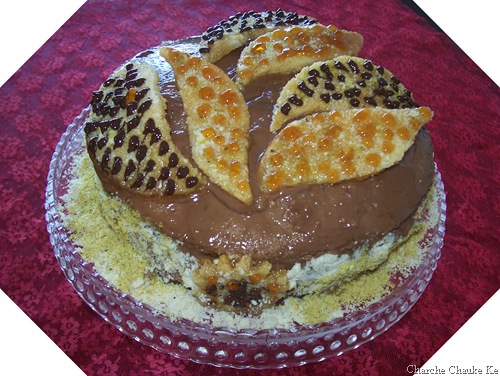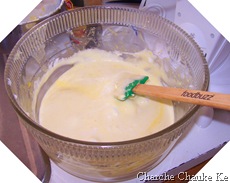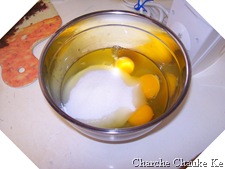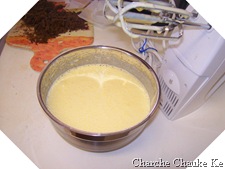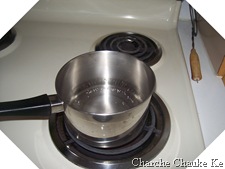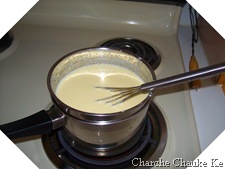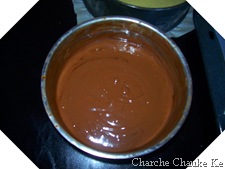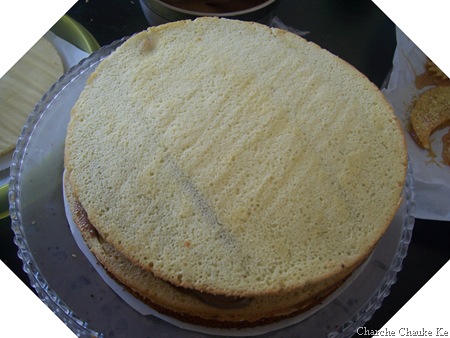Gujiyas
This post has been lying in my drafts for months now. Yes, my dear blog turned two this November but I could not post anything or even celebrate for that matter. To make the long story short, we all kept falling sick and prey to almost all the bugs around. This certainly has been a very healthy year for the bugs, specially in Michigan. Let me shut the hypochondriac in my brain who wants to enlist every detail of the past months, starting from the no. of coughs per minutes to the boxes of tissues used and move on to better things I can share with you.
In December I attended Michigan Lady Food Bloggers (MLFB) cookie exchange which was real fun.The no. of cookies I brought back home cheered everyone like nothing else could. Check out Kate’s blog for the photographs and you can absolutely drool at ALL the cookies ….. All the cookies were delicious! I made (as usual) roasted almond macarons with chocolate ganache. I think almost all got over baked. Yet, with all that sugar, how bad can a badly baked macaron taste ?…….so it wasn’t too bad 🙂 .
Moving on…….to an authentic old Indian treat “Gujiya” . I have interesting stories up my sleeve regarding the gujiya or pirakiya. I grew up watching my Grandmother (Dadda) and my Mother make gujiya for most festivals. Dadda would always fill it and close it while my Mom would make the dough, the filling and even fry it. My Mom cannot close a gujiya, she never felt the need to learn it 🙂 . Closing the gujiya or making the ‘curved pattern’ is called “Murri Banana” meaning making murri. The good thing is that I know how to make murri somewhat. [You bet, as if I will leave the chance to brag 😉 .] In my grandmother’s generation, when a girl (Indian girls then would be married at a very early age i.e. 13-14…..I am talking 1930’s) would be married, she would be asked to make gujiyas and the way her gujiya looked and tasted would be a measure of her competence in the kitchen. As I heard this story almost every year, I thought I better learn to make it well (lest I be judged on the same basis 😉 ) and so I coaxed Dadda to teach it to me. Well! till my last gujiya making stint with her, she was never really pleased with my murri. She always said mine was ok cause it would not open up but I could do better. So, see I could have actually done without bragging 🙂 . There’s always a gujiya mold available in Indian stores which seals the gujiya well and one need not make murri etc. but I have never used it. An Empanada mold would be perfect too.
Fast forward to my first year after marriage…….the first year on Diwali, I planned to make gujiyas. I really thought to myself,”big deal” I have always helped Dadda and Mummy make it. I made a few and took them to the husband’s aunt (Masiji’s ) place. Oh, were they sweet(no, not the gujiyas……..my husband’s Aunt & Uncle)….. my gujiyas were really soft and I have blanked out on the filling now. Masiji just put all the gujiyas in the oven and I think transformed it into something edible somehow. Then I kept making gujiyas every year and I doubt I ever really got it right. Either the dough would be soft or I would fry on a higher temperature or I would play with the filling , I was always unsatisfied and a bit hesitant to offer it to others. 3 years later came my Mother-In-Law who actually taught me how to make the real thing. Since then, I have been successful consistently. Nothing beats practice.
The Recipe: (For about 30 gujiyas)
For the Shell:
-
2 cups All Purpose Flour
-
4 Tbsp. Canola Oil
-
1/4 cup Water + /- 2 Tbsp. water
For the Filing:
-
200 g Khoya/Mava (Indian cooked dried milk) cut in small cubes
-
1/2 cup dry fruits (cashews, almonds, pistachios) slivered, sliced thin
-
1/4 cup raisins (green/golden ones are preferable )
-
1/2 cup sugar
-
1 Tbsp. Cardamom powder (I even crush the cardamom seeds using a rolling pin when in hurry)
-
Canola/Vegetable Oil for frying
For the binder:
-
2 Tbsp. All Purpose flour
-
1/4 cup water
To make the shell dough:
Add the oil to the all purpose flour and rub the mixture between the palms of your hands. The oil should be uniformly distributed in the flour and should resemble fine bread crumbs.
Add the water slowly to the flour and make a stiff dough. It is important to knead the dough well for good gujiyas. A good tip for all such dough is to set aside a tsp. of oil initially and then at the very end add it in a corner of the plate you are using to knead. The dough is then broken in 2 -3 pieces and then made smooth by touching those pieces with the oil in the corner till all the oil is absorbed. Cover the dough and let it rest for 1/2 an hour while the filling is prepared.
Stiff gujiya dough
To make the filling:
Heat a wok or a saucepan on medium heat (no. 5 mark) and add the khoya (milk solids) in it.
Use a spatula to break the big lumps of the khoya.
Keep frying the khoya till it turns golden brown. The heat can be reduced a little bit if you are not able to stir all the khoya to (no. 4 mark). Once the khoya turns brown, add the nuts, raisins and cardamom powder.
Let the mixture cool and then add sugar to the mixture. The sugar amount can be varied as per taste too.
Store bought Khoya / Mawa
Khoya cut into cubes
Adding nuts and raisins to fried Khoya….we do not want to brown it too much at this stage
Khoya, nuts, raisins and cardamom…….filling’s ready…it will be crumbly when dry
To make the Gujiyas:
First prepare the binder paste by mixing the all purpose flour and water. Set it aside.
The dough should be more pliable now as it has rested (goes same as humans 😉 ). Break the dough into 30 equal parts and keep rounding them with your palms as you are breaking. Cover the broken and rounded dough with a moist cloth so that they do not dry too much.
Using a rolling pin, roll each dough ball into a round about 2.5″ in diameter.
Apply the binder paste along the edges. Use your index finger to dip in the binder paste and then spread it around the circumference of the rolled out round.
Add about 1 Tbsp. of the filling into the round and fold the round into a semicircle now. At this step, you can either press all the edges hard so that they do not open, or use a gujiya mold ( empanada mold) or make a murri. The murri is made by pulling very small portions of the dough edge and rolling it over the edges. Honestly, it is a little difficult to write about it, its easier to learn when seen. I shall try someday to insert a video here but that has to wait. Keep the prepared gujiya aside and cover with a moist towel while you prepare the other gujiyas.
Almost round 😉 dough and filling
Folding and closing in process
The wok or frying pan should at least have 2″ of oil. Start heating the oil on medium heat as you prepare the gujiyas. Once 5 or 6 gujiyas are ready, add them to the oil. Drop a tiny dough piece to check the oil. It should not be so hot that the dough ball comes to the surface at once. The oil should be just hot enough that the dough ball stays immersed for about 30 seconds. You should be able to see the bubbles as you add the dough piece. Lower the heat just a little bit to about medium low (gas mark 4) and fry the gujiyas till golden and crisp.
Gujiyas in hot oil
Serve hot or at room temperature. These gujiyas keep well for at least 2 weeks in an airtight container.
These gujiyas are sometimes further dipped in sugar syrup. The consistency of the sugar syrup varies. The sugar syrup can be quite dry or even a little liquid resulting in different tasting gujiyas. I most often like it without the extra sugar though the other kinds have their own place in my heart 😉 .
If you have made any dumpling, empanada, sweet pie before, please do try this simple filling. It is extra-ordinary. No coconut, semolina….yet these will taste quite good. Most North Indians make it on Holi, the festival of colors….ah well for the next year now!
Only pictures for now 😉






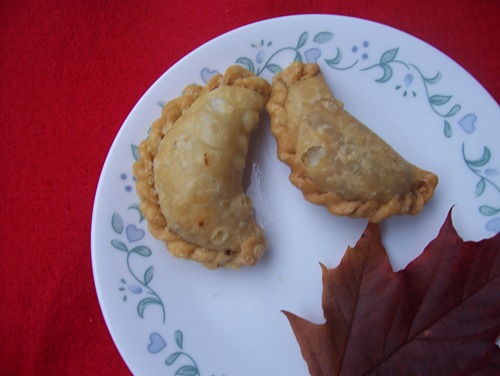


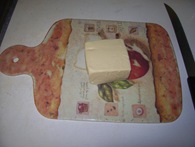





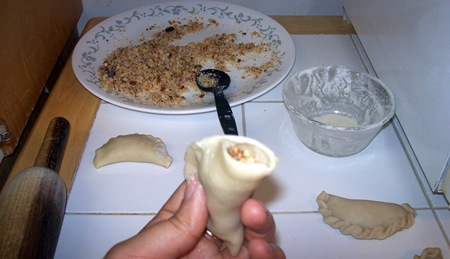
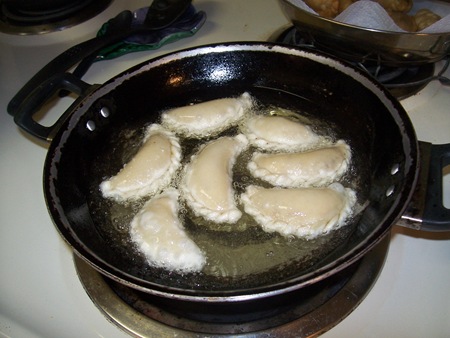
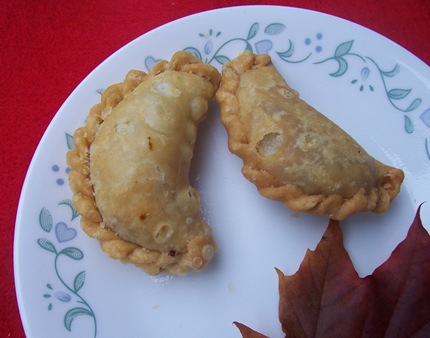
 presents
presents